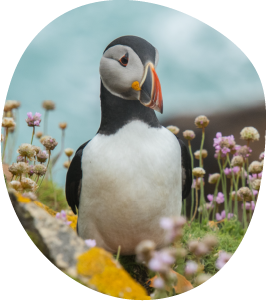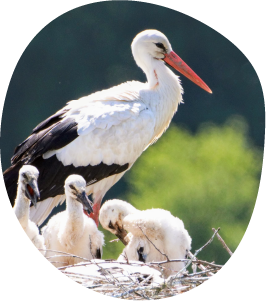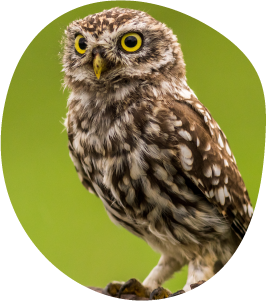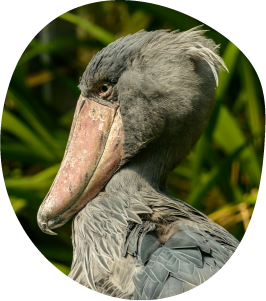WILD BIRDS
There is an estimated 10 000 bird species in the world; they are a diverse group of reptiles (yes, you read it right!) that come in a variety of shapes, sizes, and colours.
Birds are everywhere so when it comes to bird-watching, the first step is to set your intentions and decide what species you are targeting. With the right choice of tour, it is possible to admire these animals ethically in their natural habitat with a positive conservation impact.
TOP BIRD-SEEING ETHICAL EXPERIENCES

SEE LIFE IN PINK WITH FLAMINGOES
This iconic bird can be seen in a variety of locations around the world, including Africa, South America, the Caribbean, India, and the Middle East.
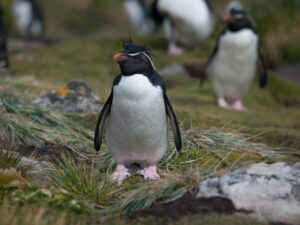
WATCH HERDS OF PENGUINS
Penguins are a common sight in the Falkland Islands - an Overseas British Territory located off the coast of Argentina - with five species of penguin living there.

OBSERVE PUFFIN COLONIES
Puffins are lovely birds living in colonies on rocky coasts and islands. Two popular countries to spot them are Iceland and the United Kingdom.
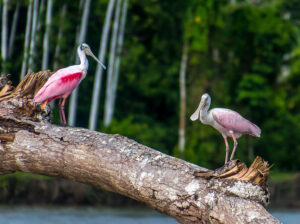
VISIT MANU NATIONAL PARK
Manu National Park is located in Peru, and is considered one of the most biodiverse places on Earth; it is home to more than 1000 species of birds.

GO ON AN AFRICAN SAFARI
Bird watching in Africa is a great way to observe some of the continent's most beautiful and rare species. It is especially popular in countries such as Kenya, South Africa, and Zimbabwe.
ALL WILD BIRDS BLOG ARTICLES & ETHICAL TOURS RECOMMENDATIONS
PUFFINS
Puffins are small and colourful, easily recognisable due to their bright red and orange beaks and distinctive black and white plumage. They live in large colonies on rocky coasts and offshore islands and spend most of their lives at sea, coming ashore only to nest during the breeding season.
SCIENTIFIC NAME
Fratercula arctica
IUCN STATUS
Vulnerable
RANGE
North Atlantic Ocean
Featured articles on PUFFINS >>
OWLS
Owls are fascinating birds of prey, known for their nocturnal habits and distinctive calls. They come in a wide variety of sizes, shapes, and colours, and can be found in almost every part of the world, from the Arctic tundra to the tropics.
SCIENTIFIC NAME
Strigiformes
IUCN STATUS
-
RANGE
Worldwide
GREATER FLAMINGO
Standing up to 150cm tall, the greater flamingo has a long neck and curved bill, as well as bright pink and orange feathers. Its plumage helps it to stand out from its habitat of wetlands, mudflats, and shallow lagoons.
SCIENTIFIC NAME
Phoenicopterus roseus
IUCN STATUS
Least concern
RANGE
Africa, India, Middle East, Southern Europe
EAGLES
Eagles – symbols of strength and freedom – are found in many parts of the world, from the deserts of the Middle East to the high mountains of North America and the Arctic tundra. These majestic birds are apex predators: they can spot their prey (small mammals, fish, and other birds) from hundreds of feet in the air and then swoop down and grab it with their sharp talons.
SCIENTIFIC NAME
Accipitridae
IUCN STATUS
-
RANGE
Worldwide
OSTRICH
Ostriches are large birds that are native to Africa. They are the largest living bird in the world, weighing up to 180kg (300 pounds) and standing up to 2.7m (9 ft) tall. Although they have wings, they are flightless. Instead, they use them for balance and to help them change direction when running.
SCIENTIFIC NAME
Struthio camelus
IUCN STATUS
Least concern
RANGE
Africa
PENGUINS
Penguins live in large colonies in the Southern Hemisphere, from the South Pole to the Galápagos Islands. They have many unique features for adapting to life in the cold and have many unique features, such as their black and white feathers, which help them blend in with the ice and snow, webbed feet for swimming, and wings that are specialized for underwater propulsion.
SCIENTIFIC NAME
Spheniscidae
IUCN STATUS
From Endangered to Least Concern depending on species
RANGE
Southern hemisphere
WHITE STORK
Recognized by its pure white feathers, black-tipped wings and long, red beak, the white stork has been a symbol of good luck for centuries, as it is believed to bring new babies to homes. It is a migratory species, travelling as far south as South Africa in the winter and as far north as Scandinavia in the summer.
SCIENTIFIC NAME
Ciconia ciconia
IUCN STATUS
Least Concern
RANGE
Mainly Europe (for breeding) and Africa (for winter)
SHOEBILL
Found in East Africa, the shoebill is a large bird that stands out from its unmistakable bill that resembles a shoe (hence its name!). Its preferred habitat is large open wetlands with plenty of shallow water, where it feeds on fish, frogs, and even other aquatic animals.
SCIENTIFIC NAME
Balaeniceps rex
IUCN STATUS
Vulnerable
RANGE
Africa

